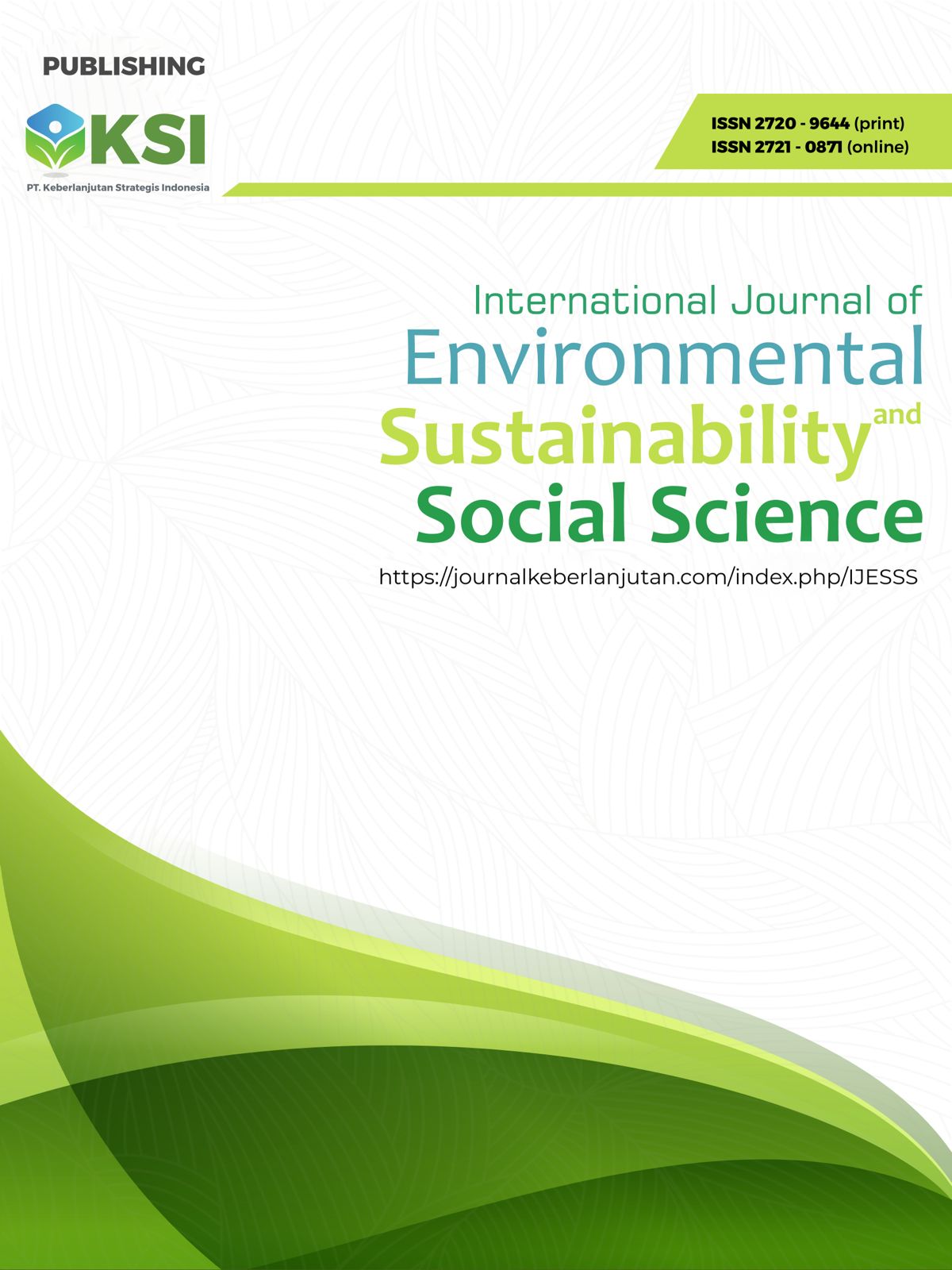Socio-Economic Analysis of Women's Participation in Silk Industry in Bihar
DOI:
https://doi.org/10.38142/ijesss.v6i6.1537Keywords:
Sericulture, Rural Women Empowerment, Tussar Silk, LivelihoodsAbstract
This study explores the role of rural women in sericulture, focusing on their involvement and challenges in the Tussar silk industry in Bihar, India. With a focus on four districts, Purnia, Katihar, Banka, and Bhagalpur, the study surveyed 120 women, 30 from each district, engaged in sericulture. Women constitute 60% of the workforce in sericulture, which contributes 28.41% of household income, making it a critical livelihood source in India. Their involvement is concentrated in activities close to home, as they face challenges in tasks requiring external mobility. Many women entrepreneurs in this sector have limited education, and there is a need for government and sericulture departments to collaborate on targeted training and development programs. These initiatives aim to uplift the socioeconomic conditions of rural women and enhance their participation in sericulture for economic empowerment.
Downloads
References
Ahmad, R., & Fatima, S. (2025). Socio-Economic Analysis of Women's Participation in the Silk Industry in Bihar. Maulana Azad National Urdu University.
Bhattarcharjya, D., Alam, K., Bhuimali, A., & Saha, S. (2020). Status, potentials, constraints, and strategies for the development of the sericulture farming system in the West Bengal state of India. Bulgarian Journal of Agricultural Science, 26(4).
Bukhari, R., & Kour, H. (2019). Background, Current Scenario, and Future Challenges of the Indian Silk Industry. International Journal of Current Microbiology and Applied Sciences, 8(05), 2448–2463. https://doi.org/10.20546/ijcmas.2019.805.289
Hatibaruah, D. (2022). Socio-economic Analysis among the Farmers Engaged in Sericulture Practices in Jorhat District of Assam, India. 36–40. https://doi.org/10.9734/ajaees/2022/v40i330856
Madhu, D. M., Gowda, H., NR, K. R., & Kiran, G. V. (2023). Women's participation in the production of mulberry silk in Chikkaballapur District of Karnataka, India.
Siddappaji. D, Latha C. M, Ashoka S R, & Raja, M. G. B. (2014). Socio-economic Development through Sericulture in Karnataka. IOSR Journal of Humanities and Social Science, 19(10), 24–26. https://doi.org/10.9790/0837-191052426
Ghonmode, S. V. (2023). Influence of Covid-19 Peak Period on Sericulture Farmers, Reelers, Weavers and Traders. Current Agriculture Research Journal, 11(1), 212–218. https://doi.org/10.12944/carj.11.1.18
Guresci, E. (2021). A Study on The Sericulture in Turkey. ISPEC Journal of Agricultural Sciences, 5(4), 890–902.
Das, S. R., Ghosh, A., Ray, M. K., Singh, G. B., & Baruah, P. K. (2019). Eco-friendly Environment of Tripura, India, Proves to be a Boon for Tasar Cultivation on Zizyphus mauritiana L. International Journal of Plant and Environment. https://doi.org/10.18811/ijpen.v5i01.11
Bukhari, R., Kour, H., & Aziz, A. (2019). Women and the Indian Sericulture Industry. International Journal of Current Microbiology and Applied Sciences, 8(05), 857–871. https://doi.org/10.20546/ijcmas.2019.805.101
Bukhari, R., Kour, H., & Aziz, A. (2019). Women and the Indian Sericulture Industry. International Journal of Current Microbiology and Applied Sciences, 8(05), 857–871. https://doi.org/10.20546/ijcmas.2019.805.101
Hatibaruah, D. (2022). Socio-economic Analysis among the Farmers Engaged in Sericulture Practices in Jorhat District of Assam, India. 36–40. https://doi.org/10.9734/ajaees/2022/v40i330856
Hosamani, V., Yalagi, M., Sasvihalli, P., Hosamani, V., Nair, K. S., Harlapur, V., Hegde, C., & Mishra, R. S. (2020). Constraints and economics of sericulture: A review. International Journal of Chemical Studies, 8(1), 746–750. https://doi.org/10.22271/chemi.2020.v8.i1k.8353
Mishra, P. (2021). A Study on the Status and Prospects of Tasar Sericulture Industry and its Impact on Tribal Lives in Jharkhand. International Journal for Research in Applied Science and Engineering Technology, 9(9), 1773–1777. https://doi.org/10.22214/ijraset.2021.38250
Downloads
Published
Issue
Section
License
Copyright (c) 2025 Ruksar AHMAD, Saneem FATIMA

This work is licensed under a Creative Commons Attribution-NonCommercial 4.0 International License.
Creative Commons Attribution-NonCommercial 4.0 International License.



















